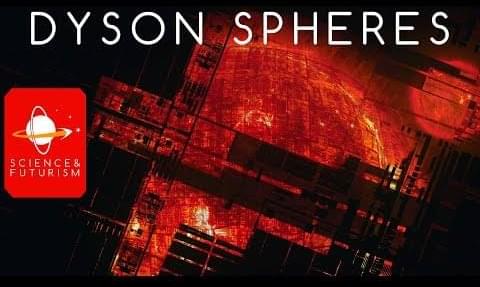Dropbox is a free service that lets you bring your photos, docs, and videos anywhere and share them easily. Never email yourself a file again!
There’s apparently a dearth of close-orbiting Neptune-size planets in our galaxy, and two observation techniques are starting to explain why.
Astronomers picked up extraterrestrial signals which they previously missed in an area they thought was devoid of potential ET activity. It could be the first hint that humans are not alone in the universe.
Mysterious Signals Detected
Experts led by University of Toronto student Peter Ma used an algorithm with artificial intelligence (AI) to examine 820 stars in an area they didn’t suspect would have any potential activity. They were surprised with their finding, especially since they missed the tentative signals earlier due to a lot of interference, Daily Mail reported.
Join us on Patreon! https://www.patreon.com/MichaelLustgartenPhD
Discount Links:
NAD+ Quantification: https://www.jinfiniti.com/intracellular-nad-test/
Use Code: ConquerAging At Checkout.
Green Tea: https://www.ochaandco.com/?ref=conqueraging.
Oral Microbiome: https://www.bmq30trk.com/4FL3LK/GTSC3/
The WHO said there are currently nine deaths and 16 suspected cases with symptoms including fever, fatigue, diarrhea and vomiting. The agency said it was sending medical experts to help officials in Equatorial Guinea stop the outbreak and was also sending protective equipment for hundreds of workers.
What is the Marburg virus?
Like Ebola, the Marburg virus originates in bats and spreads between people via close contact with the bodily fluids of infected people, or surfaces, like contaminated bedsheets.
BERLIN, Feb 19 (Reuters) — Clinical trials for BioNTech’s (22UAy. DE) cancer vaccines should start this year in Britain, marking an important step towards their possible sale on the open market, the German company’s top executive Ugur Sahin told magazine Der Spiegel.
BioNTech, known for its COVID vaccine with U.S. partner Pfizer (PFE.N), is currently deciding which types of cancer it wants to test its personalized cancer immunotherapies on and the locations where it will conduct the trials, Sahin said.
The company wants these therapies, which are based on messenger RNA (mRNA) technology similar to the one that underpins its COVID-19 vaccine, to soon become a regular treatment for cancer patients.
Documents related to Tesla’s Hardware 4 radar have now been made public by the Federal Communications Commission (FCC). Numerous photos of the new radar unit’s exterior and interior have also been released. Tesla describes its new radar as “a non-pulsed Automotive Radar which operates in the 76–77 GHz spectrum and supports 3 sensing modes.”
Tesla also noted that the new radar unit measures approximately 196 mm (Length) x 82 cm (Width) x 40 mm (Height).
Following are some exterior photos of Tesla’s new radar unit.
Throughout billions of years, galaxies expand and evolve through the appropriately titled “galactic immigration” events, which involve the formation of new stars and mergers with other galaxies. Scientists examine the movements of individual stars within a galaxy and its wide halo of stars and dark matter to learn more about the histories of these immigration episodes. But until now, such cosmic archaeology has only been possible in our galaxy, the Milky Way.
An international team of researchers has uncovered striking new evidence of a large galactic immigration event in the Andromeda Galaxy. Star motions exhibit complex patterns indicating migratory history similar to the Milky Way. The new findings were attained using Nicholas U.’s Dark Energy Spectroscopic Instrument, which the DOE operates.
A team of astronomers studied the motions of nearly 7,500 stars in the inner halo of the Andromeda Galaxy, also known as Messier 31 (M31). They found patterns in their positions and motions that indicated how these stars originated as a part of an earlier galaxy that joined M31 about 2 billion years ago. Although such patterns have long been anticipated by theory, they have never been observed in a galaxy with such clarity.
A video series looking at concepts for truly huge structures that we might see in the future. We begin with ground-based and Low Orbit structures to help us get up into space and proceed up through artificial habitats and planets to structures which encompass stars and can even move them. Audio-only version for mobile devices available at: https://soundcloud.com/isaac-arthur-148927746/sets/
Scientists’ insatiable search for finding another planet that could support human life has just got a leg up following the discovery of two Earth-like alien worlds. Both the spatial bodies have a mass similar to that of Earth and have been found in the habitable zone of a star so far known as GJ 1002. The star is one of the dwarf stars referred to as M dwarfs, which are stars that have only a fraction of the Sun’s mass and luminosity.
The discovery was made by scientists working at the Instituto de Astrofísica de Canarias (IAC) in Spain. Astrophysicist Vera María Passenger explained to Science Alert that GJ 1,002 was a “dwarf” star with a mass only one-eighth that of the Sun. “It is quite a cool, faint star. This means that its habitability zone is very close to the star.”









